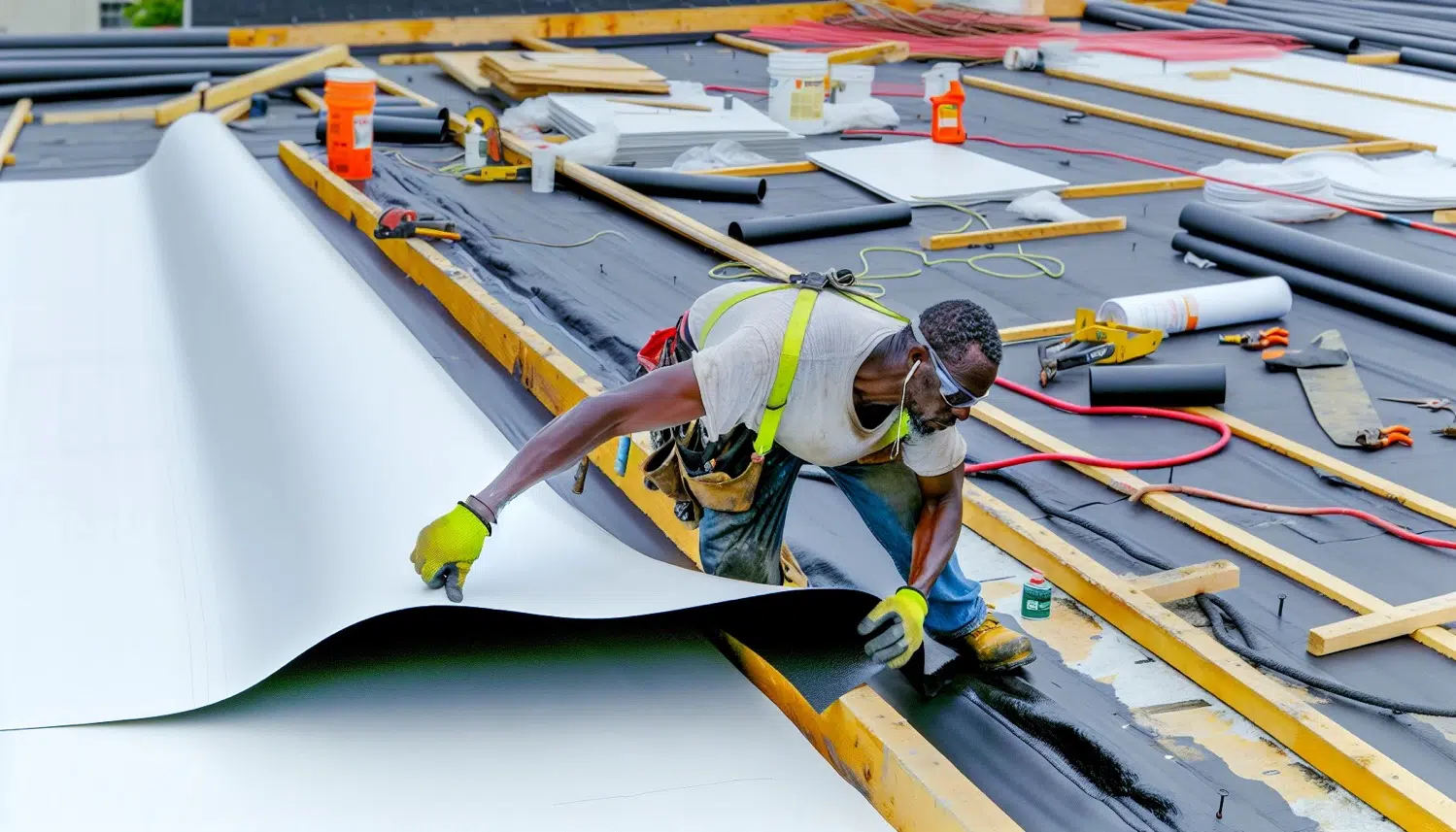In the realm of commercial roofing, TPO (Thermoplastic Olefin) has emerged as a popular choice due to its durability, energy efficiency, and cost-effectiveness. This blog post delves into what TPO roofing is, its benefits, installation process, and why it might be the right choice for your roofing needs.
What is TPO Roofing?
TPO roofing is a type of single-ply roofing membrane made from a blend of thermoplastic polyolefin and other materials. It is commonly used in commercial and industrial roofing applications due to its resilience and practicality. TPO membranes are usually white, which contributes to their reflective properties, making them ideal for energy-efficient roofing solutions.
Key Components of TPO Roofing
- Thermoplastic Polyolefin (TPO): The primary material used in TPO roofing is a blend of polypropylene and ethylene-propylene rubber. This combination gives the membrane its flexibility and strength.
- Reinforcements: TPO membranes often have reinforcing materials such as polyester or fiberglass embedded within them to enhance durability and performance.
Benefits of TPO Roofing
TPO roofing offers several advantages, making it a preferred choice for many commercial buildings:
- Energy Efficiency:
- Reflective Properties: TPO roofing membranes are highly reflective, meaning they can reflect UV rays and reduce heat absorption. This reflective quality helps in lowering cooling costs by keeping the building cooler in hot weather.
- Reduced Heat Island Effect: By reflecting sunlight rather than absorbing it, TPO roofing helps mitigate the heat island effect, contributing to overall environmental sustainability.
- Durability:
- Weather Resistance: TPO membranes are designed to withstand harsh weather conditions, including high winds, heavy rain, and UV exposure.
- Chemical Resistance: They are resistant to chemicals and pollutants, making them suitable for various industrial and commercial applications.
- Flexibility and Installation:
- Easy Installation: TPO roofing is lightweight and flexible, which simplifies the installation process. It can be installed using mechanical fasteners, adhesives, or heat welding.
- Seam Strength: The seams of TPO membranes are heat-welded, creating a strong, watertight bond that reduces the risk of leaks.
- Cost-Effectiveness:
- Affordable: Compared to some other roofing materials, TPO is relatively affordable, offering a cost-effective solution without compromising on quality or performance.
- Low Maintenance: TPO roofs require minimal maintenance, which can further reduce long-term costs.
- Environmentally Friendly:
- Recyclable: TPO roofing membranes are recyclable, aligning with green building practices and reducing environmental impact.
Installation Process
The installation of TPO roofing involves several key steps:
- Preparation:
- Roof Deck Inspection: Before installation, the roof deck must be inspected and prepared. Any existing roofing material or debris is removed, and the surface is cleaned and repaired as needed.
- Insulation:
- Insulation Placement: A layer of insulation is often placed on the roof deck to improve energy efficiency and provide a stable base for the TPO membrane.
- Membrane Installation:
- Roll Out Membrane: The TPO membrane is unrolled and positioned on the roof. The membrane can be installed using various methods, including mechanical fasteners, adhesives, or heat welding.
- Seam Welding: The seams of the TPO membrane are heat-welded to create a strong, continuous bond. This welding process ensures that the roof is watertight and secure.
- Flashing and Detailing:
- Flashing Installation: Flashing around roof penetrations, edges, and corners is installed to ensure proper sealing and prevent water infiltration.
- Final Inspection:
- Quality Check: After installation, a thorough inspection is conducted to ensure that all seams are properly welded, and the roof is free of defects.
Maintenance and Care
While TPO roofing is low-maintenance, regular inspections and care are recommended to ensure its longevity:
- Routine Inspections: Regularly inspect the roof for any signs of damage, such as punctures, blisters, or seam separation.
- Cleaning: Keep the roof clean and free of debris to prevent potential damage and maintain optimal performance.
- Prompt Repairs: Address any issues or repairs promptly to prevent small problems from escalating into more significant concerns.
Conclusion
TPO roofing offers a range of benefits, including energy efficiency, durability, and cost-effectiveness, making it a popular choice for commercial and industrial applications. Its reflective properties, ease of installation, and low maintenance requirements contribute to its appeal as a practical and sustainable roofing solution. Whether you’re considering TPO for a new installation or as a replacement for an existing roof, understanding its advantages and installation process will help you make an informed decision and ensure a successful roofing project.
Keep an eye for more news & updates on MyStoriesList.Com!
